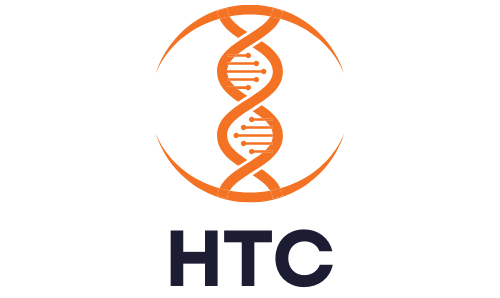Venture Capital's Role in Shaping the HealthTech Landscape
In the ever-evolving world of healthcare, the role of technology has become increasingly pivotal. Innovations in health technology (HealthTech) are revolutionizing the way we diagnose, treat, and manage diseases, bringing about more efficient and personalized care. As these technological advancements continue to accelerate, venture capital (VC) firms have emerged as critical catalysts for this innovation, providing the necessary funding and strategic support to fuel the growth of promising HealthTech startups.
Venture capital investments have become instrumental in driving the development and commercialization of groundbreaking technologies in areas such as digital health, biopharmaceuticals, and medical devices. These investments not only offer financial backing but also bring industry expertise, strategic guidance, and valuable connections to help startups navigate the complex healthcare landscape.
This article explores the impact of venture capital on HealthTech startups, highlighting the key factors driving VC interest in this sector, strategies for attracting VC funding, and the future outlook for VC investments in HealthTech. By examining these elements, we aim to provide insights for both academics and investors interested in the transformative potential of HealthTech innovations.
The VC Investment Landscape in HealthTech
In recent years, the HealthTech sector has witnessed a remarkable surge in venture capital investments, reflecting the industry's immense potential for disruptive innovation and lucrative returns. According to a report by Rock Health, VC funding in digital health startups alone reached a staggering $8.3 billion in 2022. This unprecedented level of investment highlights the growing confidence among investors in the transformative power of HealthTech solutions.
Surge in VC Investments
The significant influx of venture capital into HealthTech can be attributed to several factors, including the increasing demand for advanced healthcare solutions, the rapid pace of technological innovation, and the pressing need to address inefficiencies in traditional healthcare systems. These investments are not only driving the development of innovative medical technologies but also accelerating their commercialization, enabling startups to bring their solutions to market more quickly and effectively.
Prominent VC Firms in HealthTech
Several prominent venture capital firms have been at the forefront of this investment wave, recognizing the transformative potential of HealthTech startups. Noteworthy firms include:
- Builders VC: Known for its focus on companies that address fundamental challenges in various industries, including healthcare. Builders VC leverages its extensive network and industry expertise to support HealthTech startups in scaling their innovations.
- Andreessen Horowitz: A leading venture capital firm with a strong track record in funding disruptive technologies. Andreessen Horowitz has made significant investments in HealthTech, supporting companies that are redefining healthcare delivery and improving patient outcomes.
- Khosla Ventures: Founded by renowned venture capitalist Vinod Khosla, this firm is dedicated to investing in transformative technologies. Khosla Ventures has a keen interest in HealthTech startups that leverage artificial intelligence, data analytics, and other advanced technologies to revolutionize healthcare.
Role of VC Firms Beyond Funding
Venture capital firms play a crucial role in the success of HealthTech startups beyond providing financial backing. Their involvement often extends to strategic guidance, industry expertise, and valuable connections, which are essential for navigating the complexities of the healthcare sector.
- Strategic Guidance: VC firms offer strategic insights that help startups refine their business models, identify market opportunities, and develop go-to-market strategies. This guidance is invaluable for startups aiming to achieve sustainable growth and competitive advantage.
- Industry Expertise: Many venture capital firms have extensive experience and knowledge in the healthcare industry. They understand the regulatory environment, market dynamics, and technological trends, enabling them to provide informed advice and support to startups.
- Valuable Connections: VC firms have vast networks of industry contacts, including potential customers, partners, and advisors. These connections can open doors for HealthTech startups, facilitating partnerships, collaborations, and market entry.
The surge in venture capital investments in HealthTech is a testament to the sector's potential for innovation and growth. Prominent VC firms like Builders VC, Andreessen Horowitz, and Khosla Ventures are not only providing crucial funding but also offering strategic guidance, industry expertise, and valuable connections that are instrumental in driving the success of HealthTech startups. As these investments continue to flow into the sector, the impact on healthcare innovation is expected to be profound, paving the way for more advanced and accessible healthcare solutions.
Key Factors Driving VC Interest in HealthTech
The heightened interest of venture capital (VC) firms in HealthTech startups is driven by several key factors that highlight the sector's potential for significant impact and growth. These factors include the need to address unmet medical needs, the aging population and chronic disease burden, the consumerization of healthcare, and regulatory support and incentives.
Unmet Medical Needs
One of the primary drivers of VC interest in HealthTech is the existence of numerous unmet medical needs. Despite significant advancements in healthcare, many medical conditions remain inadequately addressed, presenting opportunities for innovative solutions. HealthTech startups are leveraging cutting-edge technologies to develop new treatments and interventions.
- Artificial Intelligence (AI): AI is being used to enhance diagnostic accuracy, predict disease progression, and personalize treatment plans. Startups like PathAI and Zebra Medical Vision are utilizing AI to improve the detection and diagnosis of diseases from medical images.
- Genomics: Advances in genomic technologies are enabling precision medicine, where treatments are tailored to the genetic makeup of individual patients. Companies like 23andMe and Illumina are pioneering the use of genomic data to inform personalized healthcare strategies.\
- Digital Therapeutics: These are software-based interventions that can prevent, manage, or treat medical conditions. Examples include Omada Health and Pear Therapeutics, which offer digital solutions for managing chronic diseases and mental health conditions.
Aging Population and Chronic Disease Burden
The global population is aging, and the prevalence of chronic diseases is increasing. These trends are driving the demand for efficient and cost-effective healthcare solutions that can manage the long-term care needs of these populations.
- Chronic Disease Management: HealthTech startups are developing innovative approaches to manage chronic conditions like diabetes, heart disease, and respiratory disorders. Remote monitoring devices, mobile health apps, and virtual care platforms empower patients to actively participate in their care while reducing the burden on healthcare systems.
- Aging Population: Solutions that cater to the needs of an aging population, such as assistive technologies and home healthcare services, are attracting significant investment. Companies like Honor and Livongo (now part of Teladoc Health) are leading the way in providing comprehensive care for older adults and those with chronic illnesses.
Consumerization of Healthcare
The consumerization of healthcare is a trend where individuals are increasingly taking an active role in managing their health. This shift is driving the demand for user-friendly and accessible healthcare solutions.
- Wearable Devices: Wearables like fitness trackers and smartwatches are enabling continuous health monitoring. Companies such as Fitbit and Apple are at the forefront of this trend, offering devices that track physical activity, sleep patterns, and vital signs.
- Telemedicine: The rise of telemedicine has been accelerated by the COVID-19 pandemic, making remote consultations and healthcare services more accessible. Platforms like Teladoc and Amwell are providing virtual care services that improve access to healthcare and enhance patient convenience.
- Personalized Health Apps: Mobile health apps are empowering consumers to manage their health on the go. Apps like MyFitnessPal and Headspace offer tools for tracking diet, exercise, and mental health, promoting overall wellness and prevention.
Regulatory Support and Incentives
Governments and regulatory bodies worldwide are recognizing the potential of HealthTech innovations to improve patient care and reduce healthcare costs. This recognition is translating into policies and incentives that encourage investment and innovation in the sector.
- Regulatory Frameworks: Frameworks such as the 21st Century Cures Act in the United States are designed to accelerate the development and approval of medical innovations. These regulations provide a supportive environment for HealthTech startups to bring their products to market.
- Incentives: Financial incentives, grants, and funding programs are available to support HealthTech research and development. Initiatives like the Small Business Innovation Research (SBIR) program offer funding opportunities for startups to advance their technologies.
- Reimbursement Policies: Improved reimbursement policies for digital health services, such as telemedicine and remote monitoring, are encouraging the adoption of these technologies. Payers are increasingly recognizing the value of digital health solutions in delivering cost-effective care.
The growing interest of venture capital firms in HealthTech is fueled by a combination of unmet medical needs, the aging population and chronic disease burden, the consumerization of healthcare, and supportive regulatory environments. These factors collectively highlight the vast potential for innovation and investment in the HealthTech sector, promising to drive transformative changes in healthcare delivery and patient outcomes.
Strategies for Attracting VC Funding
For HealthTech startups seeking venture capital (VC) funding, understanding and addressing the key criteria that investors use to evaluate investment opportunities is crucial. Here are some strategies to increase the likelihood of securing VC backing
Demonstrate a Clear Value Proposition
To attract VC investment, HealthTech startups must clearly articulate their value proposition. This involves highlighting how the solution addresses significant unmet needs and provides compelling value to stakeholders, including patients, healthcare providers, and payers.
- Addressing Unmet Needs: Clearly identify the problem your solution aims to solve. Highlight gaps in current healthcare practices and demonstrate how your technology offers a unique and effective solution.
- Stakeholder Value: Explain the benefits your solution brings to different stakeholders. For instance, detail how it improves patient outcomes, increases efficiency for healthcare providers, or reduces costs for payers.
Build a Strong Team
Investors place substantial importance on the expertise and experience of the founding team. A well-rounded team with a deep understanding of the healthcare industry, technical expertise, and a proven track record can significantly enhance the likelihood of securing VC funding.
- Expertise and Experience: Showcase the qualifications and relevant experience of your team members. Highlight any previous successes in the healthcare or technology sectors.
- Proven Track Record: Demonstrate past achievements that illustrate your team’s ability to execute and deliver results. This could include successful product launches, strategic partnerships, or previous funding rounds.
Validate the Market Opportunity
Thorough market research and a substantial addressable market are essential for attracting VC interest. HealthTech startups should provide compelling evidence of market demand, competitive landscape analysis, and a clear path to market adoption.
- Market Research: Present data that supports the need for your solution, such as statistics on the prevalence of the health issue you’re addressing or insights from industry reports.
- Addressable Market: Clearly define your target market and estimate its size. Show how your solution fits into the broader healthcare ecosystem.
- Competitive Analysis: Analyze the competitive landscape and demonstrate how your solution stands out. Highlight your unique selling points and competitive advantages.
- Path to Market Adoption: Outline your go-to-market strategy, including partnerships with healthcare providers, payer reimbursement strategies, or direct-to-consumer marketing plans.
Develop a Robust Business Model
A well-defined and sustainable business model is crucial for attracting VC investment. HealthTech startups should clearly outline their revenue streams, pricing strategies, and scalability plans, while addressing potential challenges such as reimbursement models and regulatory hurdles.
- Revenue Streams: Identify the different ways your company will generate revenue, such as subscription fees, licensing agreements, or sales of devices and services.
- Pricing Strategies: Explain your pricing strategy, considering factors like cost of goods sold, competitive pricing, and perceived value to customers.
- Scalability Plans: Demonstrate how your business can scale over time, including plans for expanding to new markets or increasing production capacity.
- Reimbursement Models and Regulatory Hurdles: Address any challenges related to reimbursement from payers and regulatory approval. Show that you have a clear understanding of these issues and a plan to navigate them successfully.
Demonstrate Traction and Early Validation
While early-stage startups may not yet have significant revenue or a large user base, demonstrating traction through pilot studies, clinical trials, or early customer adoption can significantly strengthen the investment case.
- Pilot Studies: Conduct pilot studies to test your solution in real-world settings. Collect data and feedback to validate your concept and demonstrate its effectiveness.
- Clinical Trials: If applicable, initiate clinical trials to provide robust evidence of your product’s safety and efficacy. Positive trial results can be a powerful tool for attracting investment.
- Early Customer Adoption: Showcase any early adopters or customers who are already using your product. Provide testimonials or case studies that highlight the benefits they have experienced.
By focusing on these strategies, HealthTech startups can enhance their appeal to VC investors and increase their chances of securing the funding needed to bring their innovative solutions to market.
Case Studies of Successful HealthTech Investments
To understand the transformative impact of VC investments in the HealthTech sector, let's explore a few success stories: Notable Labs, Moderna Therapeutics and Livongo Health.
Notable Labs
Backing by Builders VC: Notable Labs, a clinical-stage platform therapeutics company developing predictive precision medicines, has received significant backing from Builders VC. This support has been instrumental in advancing Notable Labs' innovative approach to cancer treatment.
Focus on Predictive Precision Medicine: Notable Labs leverages cutting-edge genomics, machine learning, and drug development capabilities to create personalized therapies for cancer patients. Their Predictive Medicine Platform (PMP) analyzes the functional responses of patient-derived cancer cells to various drugs, identifying the most effective therapeutic regimens tailored to individual patients' unique molecular profiles.
Impact on the HealthTech Sector: By harnessing the power of predictive precision medicine, Notable Labs aims to improve patient outcomes and reduce the costs associated with ineffective treatments. The company's innovative approach has the potential to transform cancer care, offering new hope for patients and demonstrating the significant value of targeted HealthTech investments.
Moderna Therapeutics
Backing by Flagship Pioneering and ARCH Venture Partners: Moderna Therapeutics has been supported by leading VC firms such as Flagship Pioneering and ARCH Venture Partners. Their early investment and continuous backing have been instrumental in Moderna's rapid growth and success.
Development of mRNA-Based Therapeutics and COVID-19 Vaccine: Moderna's pioneering work in mRNA-based therapeutics has placed it at the forefront of biotechnology innovation. The company's breakthrough came with the development of its COVID-19 vaccine, which was one of the first to receive emergency use authorization globally.
Returns for Investors and Impact on the HealthTech Sector: The successful development and distribution of Moderna's COVID-19 vaccine have generated substantial returns for its investors. Moderna's market capitalization surged, reflecting the vaccine's critical role in combating the pandemic. This success has also validated the potential of mRNA technology, paving the way for further advancements in vaccine development and other therapeutic areas.
Livongo Health
Focus on Managing Chronic Conditions with a Digital Health Platform: Livongo Health developed a comprehensive digital health platform aimed at helping individuals manage chronic conditions such as diabetes, hypertension, and weight management. The platform integrates advanced data analytics, personalized coaching, and connected devices to provide real-time support and improve health outcomes.
Funding from General Catalyst and Kleiner Perkins: Livongo attracted significant VC funding from notable firms like General Catalyst and Kleiner Perkins. These investments enabled Livongo to scale its operations, enhance its technology, and expand its user base.
IPO and Acquisition by Teladoc Health for $18.5 Billion: Livongo went public in 2019, a milestone that marked its growth and market acceptance. In 2020, Teladoc Health acquired Livongo for $18.5 billion, one of the largest deals in the digital health space. This acquisition delivered substantial returns to Livongo's early investors and underscored the value of digital health solutions in managing chronic diseases.
These case studies exemplify how VC investments can propel HealthTech startups from innovative ideas to market-leading solutions, driving significant advancements in healthcare and delivering impressive financial returns.
The Future of VC Investment in HealthTech
Evolution of the HealthTech Sector and Emerging Technologies
The HealthTech sector is poised for continuous evolution, with emerging technologies driving the next wave of innovations. Precision medicine, regenerative therapies, and AI-driven diagnostics are among the key areas gaining traction.
- Precision Medicine: Tailoring treatments to individual genetic profiles is transforming the approach to patient care. This personalized strategy enhances treatment efficacy and minimizes adverse effects, paving the way for more successful patient outcomes.
- Regenerative Therapies: Techniques such as stem cell therapy and tissue engineering hold the promise of repairing or replacing damaged tissues and organs. These advancements could revolutionize the treatment of chronic diseases and injuries.
- AI-Driven Diagnostics: Artificial intelligence and machine learning algorithms are improving the accuracy and speed of medical diagnoses. These technologies assist healthcare providers in making informed decisions, leading to better patient care.
Role of VC in Nurturing the Next Generation of HealthTech Disruptors
Venture capital firms are instrumental in identifying and nurturing the next generation of HealthTech disruptors. By providing not only financial support but also strategic guidance and industry connections, VC firms enable startups to scale their innovations and bring them to market. The proactive involvement of VC firms in the early stages of development helps startups navigate the complexities of the healthcare landscape, increasing their chances of success.
Navigating Regulatory, Reimbursement, and Ethical Challenges
The path to innovation in HealthTech is fraught with challenges, particularly in regulatory, reimbursement, and ethical domains.
- Regulatory Challenges: HealthTech startups must comply with stringent regulations that vary across regions. Understanding and navigating these regulatory landscapes is crucial for bringing new products to market.
- Reimbursement Models: Securing reimbursement from healthcare payers is essential for the financial sustainability of HealthTech solutions. Companies must demonstrate the value and cost-effectiveness of their innovations to gain payer support.
- Ethical Considerations: Issues such as data privacy, patient safety, and equitable access to healthcare innovations are paramount. Ensuring robust data protection measures and addressing ethical concerns are critical for maintaining public trust and achieving widespread adoption.
Importance of a Collaborative Ecosystem
A collaborative ecosystem that includes entrepreneurs, investors, healthcare providers, and policymakers is essential for the growth and success of the HealthTech sector.
- Entrepreneurs bring innovative ideas and solutions to the table.
- Investors provide the necessary capital and strategic support.
- Healthcare Providers offer practical insights and validate the effectiveness of new technologies.
- Policymakers ensure that the regulatory environment is conducive to innovation while safeguarding public interests.
By working together, these stakeholders can overcome challenges, accelerate innovation, and drive transformative change in healthcare.
Conclusion
Venture capital has a transformative impact on the HealthTech sector, driving innovation and enabling the commercialization of groundbreaking technologies. However, navigating the complexities of regulatory, reimbursement, and ethical challenges is crucial for sustained success.
A strategic approach, coupled with a collaborative ecosystem, can unlock the full potential of HealthTech innovations. By fostering partnerships between entrepreneurs, investors, healthcare providers, and policymakers, we can create a future where advanced healthcare solutions are accessible, effective, and equitable, ultimately improving patient care and outcomes.










